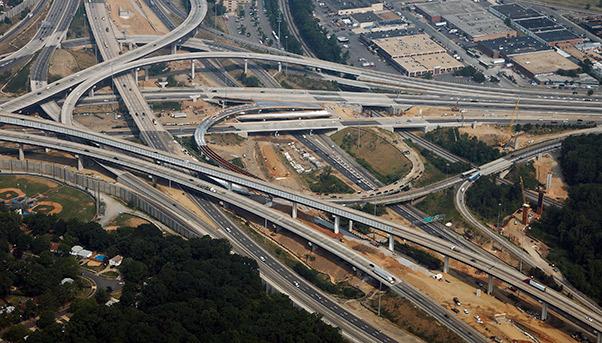It might not have reached the futuristic vision of transportation on display at the 1939 World’s Fair, but the Interstate Highway System still came to have a profound influence on the United States – and the world at large.
Not only did it contribute to the country’s emergence as a global superpower in the second half of the last century, but it also joined the automobile to capture the public imagination.
The quintessential embodiment of freedom and discovery, the highway – much like the car – became a potent symbol in popular culture. References to it in music, film and literature are endless.
But the Interstate – a system of highways that crisscrosses the United States – is first and foremost a piece of infrastructure built for a specific purpose: to facilitate the movement of goods and people, foster economic development and enhance the defence of the country. In light of the success it has had in fulfilling this role, historians consider it as perhaps the most important public works project in the world.
«There is nothing to compare it with», historian Stephen Ambrose said in a 1997 documentary film about the Interstate.
Begun in 1956, construction of the Interstate took decades, its network of highways eventually covering 46,876 miles, linking every state in the Union, from Maine on the Atlantic Coast to California on the Pacific.
Its cost eventually totalled more than $100 billion, according to the U.S. Department of Transportation (DOT).
The impact on the U.S. economy has been noteworthy. The DOT’s Federal Highway Administration says industry realized annual production cost savings averaging $0.18 for every dollar invested during the first three decades. «Clearly, investments that improve access, reliability, and intermodal connectivity have a positive economic impact», it says. «(They) promote efficiency through industrial restructuring, adoption of new transport technologies, cost reductions, and changes in distribution or logistics patterns.»
The Interstate Highway System: Eisenhower as a Champion
Like most public works of its size, the Interstate had a champion. His name was Dwight Eisenhower, who served as president for two terms between 1953 and 1961.
A fervent supporter of the idea of a national system of interconnected highways, he played a prominent role in convincing Congress to approve the necessary financing for the project. Acknowledgement of this role was immortalized in 1990 when President George Bush named the Interstate after him: the Dwight D. Eisenhower System of Interstate and Defense Highways.

Safe, Reliable, Predictable
The success of the Interstate is a testament to the ability of the country’s state and federal governments to overcome their differences to agree on a way to finance the colossal project. Often at odds with each other, these two levels of government also worked together to establish a strict set of standards to be applied to the design, construction and maintenance of the highways.
The patchwork of roads and highways of varying quality that had formed from one state to another in the preceding decades with the advent of the automobile had highlighted the need for a safe, reliable and predictable means of transportation across the country.
The Lane Construction Corp, a U.S. unit of Italy’s Salini Impregilo, played an important role in the project, building the New York Thruway and Connecticut Turnpike in one of the most densely populated – and trafficked – regions of the country.
Although motorists would later lament the tedium of driving down endless stretches of highway with no distinguishing features, the need for uniformity had been fulfilled.
«(It is) one of the most important features of the Interstate System,» read another “Public Roads” article.
By enhancing people’s freedom of movement, the Interstate changed nearly every aspect of life in the United States.
Cities, for instance, lost millions of residents to the suburbs. Although work remained in the centre, people preferred to commute to the office in cars from their spacious homes in the quieter and greener periphery.
Vision of the Future
These widespread changes brought about by the Interstate were embraced by the public because the idea of a network of highways graced by legions of cars had been in its imagination for decades.
A major contributor to this idea was “Futurama”, a popular exhibit at the 1939 World’s Fair in New York that displayed a vision of the future with scale models of cities dominated by highways.
The Interstate might not have reached the heights of the exhibit’s vision, but it came close. The curious aspect of this public works project is that the DOT does not consider it finished as extensions keep being made in different parts of the country.

